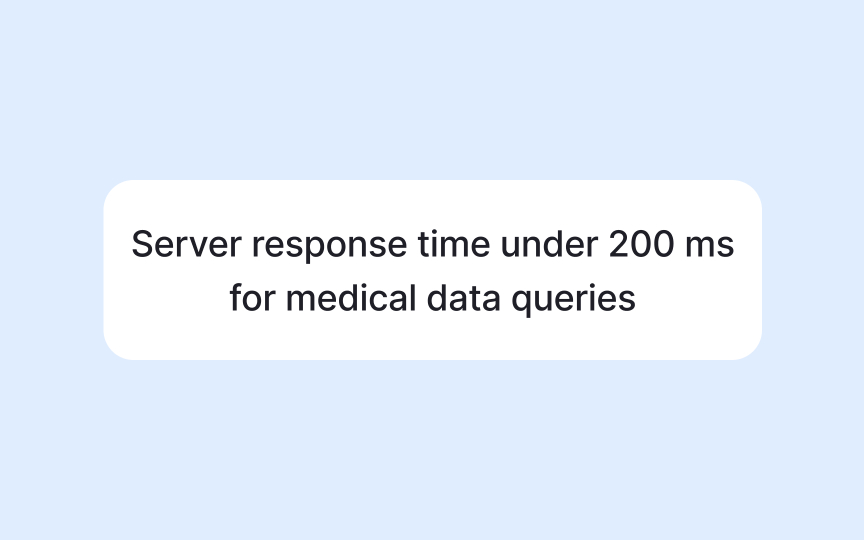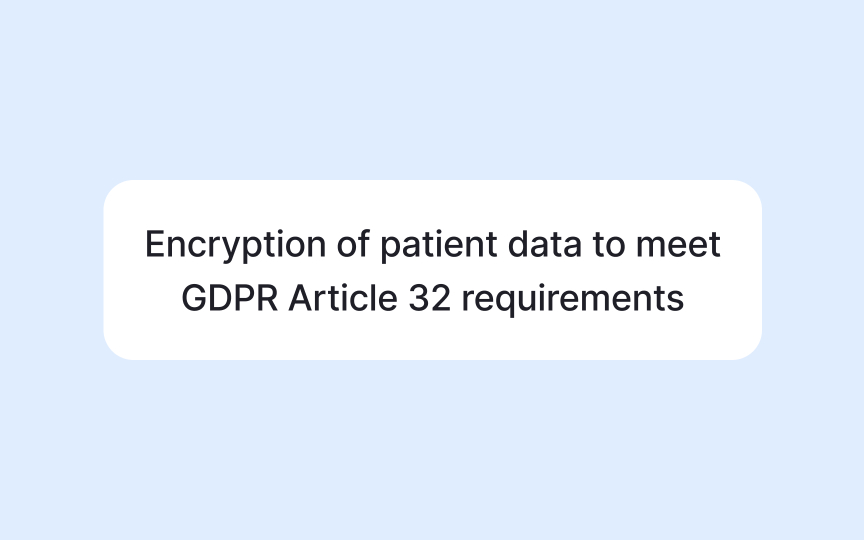Types of Product Specifications
Differentiate the key types of product specifications and understand when to use each.
Behind every successful product lies more than one kind of specification. Each serves a different purpose, helping teams move from vision to execution with clarity and precision. Understanding their differences is what separates scattered documentation from a structured development process.
Different specification types appear at different moments. Some guide early discovery and goal-setting, others define functionality or technical execution, while a few safeguard quality and compliance. Knowing how they connect gives teams a shared language and smoother collaboration across design, engineering, and business functions.
Recognizing these types and when to use them is key to building reliable products and avoiding confusion later in development.
Functional specifications describe what a product must do from the user’s point of view. They define expected behaviors, workflows, and interactions that bring business goals to life. For example, if the product is a fitness app, the specification might describe how a user sets a daily goal, starts a workout, and tracks calories, outlining every screen, input, and response the system should handle.
Such
Functional specifications serve as the foundation for technical decisions that follow. Once the “what” is defined, engineers can decide “how” to make it work.[1]
Technical specifications explain how a product will achieve the behaviors described in the functional spec. Using the same fitness app example, if the functional spec says “the app must display workout progress in real time,” the technical specification would define how this happens: which sensors capture data, which API updates the progress bar, what refresh rate ensures accuracy, and what database stores results.
These details form the engineering blueprint. They outline architecture, integrations, frameworks, and constraints. For instance, “the app must sync data every five seconds using Bluetooth Low Energy” or “the backend must support up to 10,000 concurrent users.” Clear technical specifications align teams on feasibility, performance, and security before development begins.
By separating user expectations from implementation details, teams can validate both product vision and system reliability without mixing goals.[2]
Pro Tip: Pair every “how” in a technical spec with a reason. It turns technical choices into transparent, defendable decisions.
Design specifications describe how a product should look and behave in detail, ensuring designers and developers share the same understanding of every element. They translate visual concepts into measurable design properties, bridging creativity and implementation.
A design specification usually combines two elements: a design file (often created in tools like Figma) and a development issue that provides additional context. The design file defines colors, typography, grid systems, and components, while the development issue clarifies goals, functionality, and any constraints. For example, a design spec for a mobile checkout flow might include button states, spacing between fields, animation speed, and accessibility notes like focus order or alt text for icons.
By standardizing these details, design specifications prevent inconsistencies and misinterpretation. They also help developers anticipate edge cases, like how a layout behaves on smaller screens or what happens when error messages appear. Good specs save time by making design updates visible and traceable across tools and teams.[3]
Performance specifications define how well a product or system must operate under specific conditions. Unlike functional or design specs, which describe what something does or how it looks, performance specs describe how effectively it does it.
They include measurable benchmarks such as load time, speed, uptime, responsiveness, or energy efficiency. For example, a streaming app specification may require “video playback to start within two seconds on a 4G connection” or “the system must support 1,000 concurrent users without exceeding 70% CPU usage.” These metrics provide clear criteria for testing, making it easier to identify performance issues early.
Strong performance specifications protect both user experience and business goals. They ensure that products meet expectations across devices and environments, not just in ideal conditions. By setting quantifiable standards before launch, teams avoid vague statements like “fast” or “responsive,” which are open to interpretation.
Pro Tip: Turn abstract goals into measurable numbers. What can’t be measured can’t be optimized.
Compliance and safety specifications ensure that a product meets legal, ethical, and technical standards before it reaches users. These documents outline the rules a product must follow to be approved, distributed, or used safely within its market. They can include
For example, a medical app must comply with data privacy regulations that control how patient information is stored and shared. A connected device may require electrical safety or wireless certification before entering certain regions. By documenting these requirements early, teams prevent costly redesigns and delays caused by failing to meet compliance standards later in development.
These specifications also act as safeguards for users and the company. They reduce legal risks, protect user trust, and help maintain consistency across different markets and versions of a product. Clear compliance
Pro Tip: List all compliance standards before development begins. Retrofitting safety or legal fixes after launch is rarely simple.
Not all specifications are written for the same audience. Internal specifications are created for team members within the organization, such as product managers, engineers, designers, and testers, who need detailed guidance to build and maintain the product. These documents emphasize functionality, architecture, and workflows that shape how the product operates.
External specifications, on the other hand, are shared with clients, partners, or regulators. They focus on outcomes and compliance rather than internal processes. For example, a company building software for a client may prepare an internal spec describing system integrations and APIs, and a separate external spec summarizing what the final product will deliver and under which conditions it will be accepted.
Keeping the two types distinct helps manage expectations and confidentiality. Internal documents can include proprietary methods or trade secrets, while external ones communicate commitments that are safe to disclose. Both are essential for clear communication and accountability throughout development.
Pro Tip: Tailor the depth of detail to the reader. A good spec always fits the audience it serves.
Each type of specification serves a different group within the product team, helping everyone work toward the same outcome from their own perspective. Understanding who uses which document improves communication and prevents duplicated effort.
Functional specifications primarily guide designers, developers, and product managers by describing features and workflows. Technical specifications address engineers, QA, and DevOps teams that need details about architecture, data handling, and integration. Design specifications help bridge product and development through visual and
When each group knows which specification informs their work, collaboration becomes faster and more focused. This shared clarity ensures that design, engineering, and business objectives stay aligned throughout the development process.
Pro Tip: Share specifications early with all contributors. Misalignment often starts when one team works from outdated or partial information.
Specifications do not exist in isolation. Each type connects to others at different stages of the product lifecycle, creating a continuous thread from idea to launch. Recognizing how they evolve together helps teams maintain context and prevent knowledge gaps.
Early in development, requirements or functional specifications describe what needs to be built and why. As the concept solidifies, technical and design specifications translate those ideas into detailed plans for implementation. During testing and release, performance and compliance specifications verify that the product works reliably and meets regulatory or quality standards. After launch, these documents often become references for updates, audits, or future versions.
Treating specifications as living documents keeps them relevant beyond initial delivery. Updating them when goals, technologies, or constraints change ensures long-term consistency and smoother scaling.
Pro Tip: Keep specifications version-controlled. Products evolve, and so should their documentation.
References
- What is a Functional Specification Document? | Definition from TechTarget | Search Software Quality
- How to write a technical specification [with examples] | monday.com Blog
- Creating Design Specs for Development | Nielsen Norman Group
- A Guide to Product Specification: Writing Tips + Examples | Miro | https://miro.com/






















